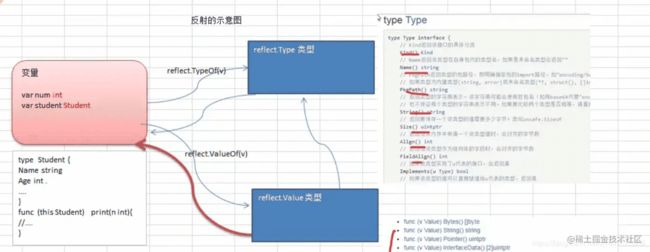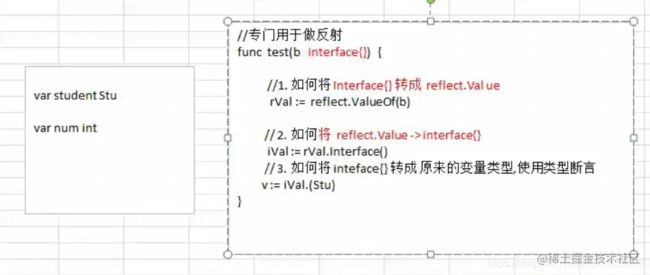- sqlmap笔记
君如尘
网络安全-渗透笔记笔记
1.运行环境sqlmap是用Python编写的,因此首先需要确保你的系统上安装了Python。sqlmap支持Python2.6、2.7和Python3.4及以上版本。2.常用命令通用格式:bythonsqlmap.py-r注入点地址--参数-rpost请求-uget请求--level=测试等级--risk=测试风险-v显示详细信息级别-p针对某个注入点注入-threads更改线程数,加速--ba
- LangChain组件Tools/Toolkits详解(5)——返回产出artifact
龙焰智能
langchainartifactToolCallBaseTool工具产物ToolMessages
LangChain组件Tools/Toolkits详解(5)——返回产出artifact本篇摘要14.LangChain组件Tools/Toolkits详解14.5返回产出artifact14.5.1定义工具14.5.2使用ToolCall调用工具14.5.3与模型一起使用14.5.4从子例化BaseTool返回参考文献本章目录如下:《LangChain组件Tools/Toolkits详解(1)—
- 计算机网络课程内容详解-ChatGPT4o作答
部分分式
计算机网络
计算机网络课程是一门系统讲解网络体系结构、通信协议、网络技术和应用的专业课程,旨在帮助学生理解计算机网络的工作原理、设计思想和实际应用。以下是计算机网络课程内容的详细介绍,涵盖知识结构、主要内容及应用方向。一、课程目标掌握计算机网络的基本概念、结构及运行原理。理解计算机网络分层模型(如OSI七层模型和TCP/IP四层模型)。掌握常见的通信协议及其功能(如HTTP、FTP、DNS等)。学会网络设备(
- JDK8新特性
陈天在睡觉
知识点总结JavaSEjavaJDK8javase八股文后端
JDK8是官方发布的一个大版本,提供了很多新特性功能给开发者使用,包含语言、编译器、库、工具和JVM等方面的十多个新特性。本文将介绍编码过程中常用的一些新特性。一、Lambda表达式1.优点简化匿名内部类的写法,允许你以简洁的方式表示可传递给方法或存储在变量中的代码块,用更加简洁和表达性的语法来编写匿名函数,从而简化了对函数式接口的实现,使代码更加简洁紧凑。提高了代码的可读性和可维护性,尤其是在处
- JS基础-事件模型(事件&事件流&自定义事件&事件冒泡/代理)
LYFlied
html&浏览器javascript事件模型事件流前端面试
文章目录一、事件与事件流二、事件模型1.DOM0级模型2.IE事件模型3.DOM2级模型4.DOM3级事件处理方式三、事件对象四、事件绑定与解除1.事件绑定1.1对象.on事件名字=事件处理函数1.2.对象.addEventListener("没有on的事件名字",事件处理函数,false)3.对象.attachEvent("有on的事件名字",事件处理函数);2.解除绑定五、EventWrapp
- CopyOnWriteArrayList详解
重生之我在成电转码
java开发语言集合
1️⃣什么是CopyOnWriteArrayList?java.util.concurrent包下的线程安全的List读多写少场景下的性能优选核心思想:写时复制(Copy-On-Write)2️⃣底层原理内部维护一个volatileObject[]array读操作:直接读取数组,不加锁,性能极高写操作(增删改):加ReentrantLock互斥锁把原数组复制一份新数组在新数组上操作操作完成后,替换
- 使用uni-app的组件(基础组件和扩展组件)
云海洋和天
uni-app小程序uni-app小程序
目录一、使用基础组件二、使用扩展组件(uni-ui)方式一:npm安装方式二:通过uni-modules导入全部组件一、使用基础组件文档uni-app官网•组件•组件概述https://uniapp.dcloud.net.cn/component/基础组件在uni-app框架中已经内置,可以直接使用。示例如:使用内置组件icon二、使用扩展组件(uni-ui)文档
- Linux系统编程:目录操作、文件权限与库管理
网恋东雪莲被骗114514
linux运维服务器
Linux系统编程:目录操作、文件权限与库管理目录的读取在Linux系统编程中,目录操作是常见的任务之一。以下是用于目录操作的核心函数及其用法:1.opendir功能:打开一个目录,返回指向目录流的指针。原型:#includeDIR*opendir(constchar*name);参数:name:目录路径字符串。返回值:成功:返回DIR*指针;失败返回NULL。示例:DIR*dir=opendir
- leetcode-hot100-python-专题三:滑动窗口
༺ Dorothy ༻
leetcodehot100leetcodepython算法
1、无重复字符的最长子串中等给定一个字符串s,请你找出其中不含有重复字符的最长子串的长度。示例1:输入:s=“abcabcbb”输出:3解释:因为无重复字符的最长子串是“abc”,所以其长度为3示例2:输入:s=“bbbbb”输出:1解释:因为无重复字符的最长子串是“b”,所以其长度为1。示例3:输入:s=“pwwkew”输出:3解释:因为无重复字符的最长子串是“wke”,所以其长度为3。请注意,
- Uni-App 双栏联动滚动组件开发详解 (电梯导航)
FFF-X
uni-app
本文基于提供的代码实现一个左右联动的滚动组件,以下是详细的代码解析与实现原理说明:{{item}}{{section.title}}{{para}}exportdefault{//组件参数定义props:{leftData:{//左侧导航数据type:Array,default:()=>['章节1','章节2','章节3','章节4','章节5','章节6'],},rightData:{//右侧内
- JavaScript基础-删除事件(解绑事件)
難釋懷
javascript前端开发语言
在现代Web开发中,动态地添加和移除事件处理器是构建交互式网页的关键技能之一。虽然添加事件处理器相对直观,但了解如何有效地移除或“解绑”这些处理器同样重要。这不仅有助于优化性能,还能防止潜在的内存泄漏问题。本文将介绍几种方法来删除JavaScript中的事件处理器,并探讨它们的应用场景及最佳实践。一、为什么需要删除事件?随着页面复杂度的增加,不恰当地管理事件处理器可能会导致性能下降或出现意外行为。
- spark explain如何使用
fzip
Sparkspark执行计划
在Spark中,explain是分析SQL或DataFrame执行计划的核心工具,通过不同模式可展示查询优化和执行的详细信息,默认情况下,这个语句只提供关于物理计划的信息。以下是具体使用方法及不同模式的作用:1.explain的基本语法在Spark3.0及以上版本,explain支持多种模式参数,通过mode指定输出格式:#DataFrame调用方式df.explain(mode="simple"
- C++缺省参数函数重载
ConFig.
c++算法数据结构
缺省参数大家知道什么是备胎吗?C++中函数的参数也可以配备胎。3.1缺省参数概念缺省参数是声明或定义函数时为函数的参数指定一个默认值。在调用该函数时,如果没有指定实参则采用该默认值,否则使用指定的实参。voidTestFunc(inta=0){cout_a=(int*)malloc(sizeof(int)*capacity);ps->_top=0;ps->_capacity=capacity;}i
- 【自建分布式数据库详细指南】(五)使用:常见API及使用问题
大板牙花生
分布式
延续前几篇文章,下面着重从一些基本的API讲讲从入门到习惯的常用方法,后续更新。USAGE1节点管理设置主节点,又成为协调节点SELECTcitus_set_coordinator_host('coord.example.com',5432);step1.创建节点select*frommaster_add_node('new-node',12345);step2.删除节点step3.新增节点后重新
- 《Oracle DBA入门实战:十大高频问题详解与避坑指南》
鸿·蒙
数据库Oracle数据库DBA入门数据库管理IT技术干货学习笔记
OracleDBA入门作业十问十答本文为OracleDBA入门作业整理,涵盖工具使用、配置管理及权限控制等核心知识点,适合新手快速上手。如有疑问或补充,欢迎评论区交流!1.DBA常用工具有哪些?OracleUniversalInstaller(OUI)用途:安装、升级或删除软件组件。OracleDatabaseConfigurationAssistant(DBCA)用途:通过图形界面创建、删除或修
- form的表单序列化
码田里的小白菜
ajax服务器javascript
百度可知:表单序列化的作用是:将表单内容序列化成一个字符串,方便Ajax传递表单值给服务器。随着Ajax的出现,表单序列化成为一种常见需求序列化应满足以下几点要求:1、对表单字段和值进行url编码,使用&符号分割2、不发送表单的禁用字段3、只发送选则的复选框和单选按钮4、不发送type为“reset”和“button”的按钮functionserialize(data){letlist=[];Ob
- SpringBoot 整合security 实现自定义Token和clientId登录及退出(二)
.猫的树
springbootspringjava
接上一篇6.认证相关处理创建登录成功DemoAuthenticationSuccessHandler.java/***用户身份验证通过处理*/@Component@SuppressWarnings("all")publicclassDemoAuthenticationSuccessHandlerimplementsAuthenticationSuccessHandler{@Autowiredpri
- 如何在苹果内购开发中获取App Store Connect API密钥-共享密钥理解内购安全-优雅草卓伊凡
卓伊凡
APP上架服务器运维
如何在苹果内购开发中获取AppStoreConnectAPI密钥-共享密钥理解内购安全-优雅草卓伊凡在苹果内购开发中,你可能会涉及到获取不同类型的“密钥”,以满足安全验证和开发的需求。以下介绍常见的获取方式:1.AppStoreConnectAPI密钥(用于服务器端验证内购)用途:如果你计划在服务器端验证用户的内购交易,以确保交易的真实性和防止欺诈,就需要使用AppStoreConnectAPI密
- 无法访问 GitHub?教你如何轻松解决
CarlowZJ
github
在开发过程中,GitHub是开发者不可或缺的代码托管平台。然而,由于网络环境或地区限制,国内用户有时会遇到无法访问GitHub的问题。本文将详细介绍几种常见原因及解决方法,帮助你快速恢复对GitHub的访问。一、常见原因及解决方案1.DNS解析问题DNS解析问题是最常见的原因之一,可能导致GitHub的域名无法正确解析为IP地址。解决方法:更换公共DNS:将本地DNS服务器更换为公共DNS,例如G
- 通过动态内存管理实现在VS2022中实现变长数组
Dust-Chasing
开发语言c语言数据结构算法
目录一、malloc函数和free函数二、calloc函数三、realloc函数不知道大家在使用vs2022编译器时有没有遇见过这样一个问题,当我们用一个变量来作为数组的大小时,编译器会报错,要求我们使用常量,这样一来就会使我们的内存空间被大量浪费,使我们非常的头疼,但是如果当我们学到动态内存管理时,我们就有了解决这个问题的办法。一、malloc函数和free函数C语言提供了一个动态内存开辟的函数
- C语言三大程序结构 & 单分支语句
要下雨了吗
c语言c++visualstudio
核心概念:程序就像流水线,通过顺序、选择、循环三种结构完成复杂任务一、三大程序结构图解结构类型形象比喻代码示例顺序直行马路→不拐弯printf("A");printf("B");选择岔路口→二选一if...else循环环形跑道→重复绕圈for/while二、选择结构:if语句完全指南1.基础语法(单分支)if(条件表达式){语句1;//条件成立时执行}else{语句2;//条件不成立时执行}2.真
- 197.HarmonyOS NEXT系列教程之图案锁振动反馈实现详解
harmonyos-next
温馨提示:本篇博客的详细代码已发布到git:https://gitcode.com/nutpi/HarmonyosNext可以下载运行哦!HarmonyOSNEXT系列教程之图案锁振动反馈实现详解效果预览1.振动功能实现startVibrator(vibratorCount?:number){try{vibrator.startVibration({//设置为'preset',可使用系统预置振动效
- 187.HarmonyOS NEXT系列教程之列表切换案例交互实现详解
harmonyos-next
温馨提示:本篇博客的详细代码已发布到git:https://gitcode.com/nutpi/HarmonyosNext可以下载运行哦!HarmonyOSNEXT系列教程之列表切换案例交互实现详解效果演示1.交互系统概述1.1交互类型//支持的交互类型1.长按拖动排序2.左滑删除3.点击选择4.拖拽动画1.2手势配置//组合手势配置.gesture(GestureGroup(GestureMod
- 186.HarmonyOS NEXT系列教程之列表切换案例数据管理详解
harmonyos-next
温馨提示:本篇博客的详细代码已发布到git:https://gitcode.com/nutpi/HarmonyosNext可以下载运行哦!HarmonyOSNEXT系列教程之列表切换案例数据管理详解效果演示1.数据模型设计1.1ListInfo类@ObservedexportclassListInfo{//列表项数据结构icon:ResourceStr='';//图标资源name:Resource
- 181.HarmonyOS NEXT系列教程之列表交换组件整体架构详解
harmonyos-next
温馨提示:本篇博客的详细代码已发布到git:https://gitcode.com/nutpi/HarmonyosNext可以下载运行哦!HarmonyOSNEXT系列教程之列表交换组件整体架构详解效果演示1.组件概述1.1功能介绍ListExchangeViewComponent是一个支持列表项交换和删除的自定义组件,主要用于实现如扣款列表等场景。主要功能包括:列表项拖拽排序滑动删除自定义列表项
- Docker之安装与配置
雨五夜
Dockerdocker容器运维
Docker之安装与配置一、Docker环境配置1.基本配置2.镜像加速3.网络配置4.数据持久化5.优化建议6.常见问题与解决方案7.补充工具二、Docker配置本地仓库指南1.拉取Registry镜像2.启动本地仓库3.配置Docker客户端Linux/macOSWindows4.推送镜像到本地仓库标记镜像推送镜像5.推送镜像到本地仓库6.管理本地仓库7.优化与安全性8.常见问题一、Docke
- 震惊! “深度学习”都在学习什么
扉间798
深度学习学习人工智能
常见的机器学习分类算法俗话说三个臭皮匠胜过诸葛亮这里面集成学习就是将单一的算法弱弱结合算法融合用投票给特征值加权重AdaBoost集成学习算法通过迭代训练一系列弱分类器,给予分类错误样本更高权重,使得后续弱分类器更关注这些样本,然后将这些弱分类器线性组合成强分类器,提高整体分类性能。(一)投票机制投票是一种直观且常用的算法融合策略。在多分类问题中,假设有多个分类器对同一数据进行分类判断。每个分类器
- 快速理解Vue3中Pinia里的subscribe方法使用
MXN_小南学前端
vue3vue前端
快速理解Vue3中Pinia里的subscribe方法使用一、Pinia简介Pinia是Vue3的状态管理库,类似Vue2中的Vuex,但使用更简洁高效二、subscribe方法简介subscribe方法是Pinia中的监听器函数,有点像watch,但监听的是store中的状态(数据/state)变化,在store中的状态变化时会执行自定义逻辑。可用于调试和定位问题、记录日志后续分析、触发操作(比
- NLP高频面试题(十)——目前常见的几种大模型架构是啥样的
Chaos_Wang_
NLP常见面试题自然语言处理架构人工智能
深入浅出:目前常见的几种大模型架构解析随着Transformer模型的提出与发展,语言大模型迅速崛起,已经成为人工智能领域最为关注的热点之一。本文将为大家详细解析几种目前常见的大模型架构,帮助读者理解其核心差异及适用场景。1.什么是LLM(大语言模型)?LLM通常指参数量巨大、能够捕捉丰富语义信息的Transformer模型,它们通过海量的文本数据训练而成,能够实现高度逼真的文本生成、复杂的语言理
- 在SPSS中进行单因素方差分析(One-Way ANOVA)是一种常见的统计分析方法,用于比较三个或更多独立组之间的均值差异。
zhangfeng1133
均值算法算法
在SPSS中进行单因素方差分析(One-WayANOVA)是一种常见的统计分析方法,用于比较三个或更多独立组之间的均值差异。以下是进行单因素方差分析的详细步骤:---###1.**数据准备**-**因变量**:需要分析的连续变量(如成绩、收入等)。-**自变量**:分类变量(如组别、性别等),通常是一个名义变量。数据结构示例:|组别(自变量)|成绩(因变量)||----------------|-
- Spring中@Value注解,需要注意的地方
无量
springbean@Valuexml
Spring 3以后,支持@Value注解的方式获取properties文件中的配置值,简化了读取配置文件的复杂操作
1、在applicationContext.xml文件(或引用文件中)中配置properties文件
<bean id="appProperty"
class="org.springframework.beans.fac
- mongoDB 分片
开窍的石头
mongodb
mongoDB的分片。要mongos查询数据时候 先查询configsvr看数据在那台shard上,configsvr上边放的是metar信息,指的是那条数据在那个片上。由此可以看出mongo在做分片的时候咱们至少要有一个configsvr,和两个以上的shard(片)信息。
第一步启动两台以上的mongo服务
&nb
- OVER(PARTITION BY)函数用法
0624chenhong
oracle
这篇写得很好,引自
http://www.cnblogs.com/lanzi/archive/2010/10/26/1861338.html
OVER(PARTITION BY)函数用法
2010年10月26日
OVER(PARTITION BY)函数介绍
开窗函数 &nb
- Android开发中,ADB server didn't ACK 解决方法
一炮送你回车库
Android开发
首先通知:凡是安装360、豌豆荚、腾讯管家的全部卸载,然后再尝试。
一直没搞明白这个问题咋出现的,但今天看到一个方法,搞定了!原来是豌豆荚占用了 5037 端口导致。
参见原文章:一个豌豆荚引发的血案——关于ADB server didn't ACK的问题
简单来讲,首先将Windows任务进程中的豌豆荚干掉,如果还是不行,再继续按下列步骤排查。
&nb
- canvas中的像素绘制问题
换个号韩国红果果
JavaScriptcanvas
pixl的绘制,1.如果绘制点正处于相邻像素交叉线,绘制x像素的线宽,则从交叉线分别向前向后绘制x/2个像素,如果x/2是整数,则刚好填满x个像素,如果是小数,则先把整数格填满,再去绘制剩下的小数部分,绘制时,是将小数部分的颜色用来除以一个像素的宽度,颜色会变淡。所以要用整数坐标来画的话(即绘制点正处于相邻像素交叉线时),线宽必须是2的整数倍。否则会出现不饱满的像素。
2.如果绘制点为一个像素的
- 编码乱码问题
灵静志远
javajvmjsp编码
1、JVM中单个字符占用的字节长度跟编码方式有关,而默认编码方式又跟平台是一一对应的或说平台决定了默认字符编码方式;2、对于单个字符:ISO-8859-1单字节编码,GBK双字节编码,UTF-8三字节编码;因此中文平台(中文平台默认字符集编码GBK)下一个中文字符占2个字节,而英文平台(英文平台默认字符集编码Cp1252(类似于ISO-8859-1))。
3、getBytes()、getByte
- java 求几个月后的日期
darkranger
calendargetinstance
Date plandate = planDate.toDate();
SimpleDateFormat df = new SimpleDateFormat("yyyy-MM-dd");
Calendar cal = Calendar.getInstance();
cal.setTime(plandate);
// 取得三个月后时间
cal.add(Calendar.M
- 数据库设计的三大范式(通俗易懂)
aijuans
数据库复习
关系数据库中的关系必须满足一定的要求。满足不同程度要求的为不同范式。数据库的设计范式是数据库设计所需要满足的规范。只有理解数据库的设计范式,才能设计出高效率、优雅的数据库,否则可能会设计出错误的数据库.
目前,主要有六种范式:第一范式、第二范式、第三范式、BC范式、第四范式和第五范式。满足最低要求的叫第一范式,简称1NF。在第一范式基础上进一步满足一些要求的为第二范式,简称2NF。其余依此类推。
- 想学工作流怎么入手
atongyeye
jbpm
工作流在工作中变得越来越重要,很多朋友想学工作流却不知如何入手。 很多朋友习惯性的这看一点,那了解一点,既不系统,也容易半途而废。好比学武功,最好的办法是有一本武功秘籍。研究明白,则犹如打通任督二脉。
系统学习工作流,很重要的一本书《JBPM工作流开发指南》。
本人苦苦学习两个月,基本上可以解决大部分流程问题。整理一下学习思路,有兴趣的朋友可以参考下。
1 首先要
- Context和SQLiteOpenHelper创建数据库
百合不是茶
androidContext创建数据库
一直以为安卓数据库的创建就是使用SQLiteOpenHelper创建,但是最近在android的一本书上看到了Context也可以创建数据库,下面我们一起分析这两种方式创建数据库的方式和区别,重点在SQLiteOpenHelper
一:SQLiteOpenHelper创建数据库:
1,SQLi
- 浅谈group by和distinct
bijian1013
oracle数据库group bydistinct
group by和distinct只了去重意义一样,但是group by应用范围更广泛些,如分组汇总或者从聚合函数里筛选数据等。
譬如:统计每id数并且只显示数大于3
select id ,count(id) from ta
- vi opertion
征客丶
macoprationvi
进入 command mode (命令行模式)
按 esc 键
再按 shift + 冒号
注:以下命令中 带 $ 【在命令行模式下进行】,不带 $ 【在非命令行模式下进行】
一、文件操作
1.1、强制退出不保存
$ q!
1.2、保存
$ w
1.3、保存并退出
$ wq
1.4、刷新或重新加载已打开的文件
$ e
二、光标移动
2.1、跳到指定行
数字
- 【Spark十四】深入Spark RDD第三部分RDD基本API
bit1129
spark
对于K/V类型的RDD,如下操作是什么含义?
val rdd = sc.parallelize(List(("A",3),("C",6),("A",1),("B",5))
rdd.reduceByKey(_+_).collect
reduceByKey在这里的操作,是把
- java类加载机制
BlueSkator
java虚拟机
java类加载机制
1.java类加载器的树状结构
引导类加载器
^
|
扩展类加载器
^
|
系统类加载器
java使用代理模式来完成类加载,java的类加载器也有类似于继承的关系,引导类是最顶层的加载器,它是所有类的根加载器,它负责加载java核心库。当一个类加载器接到装载类到虚拟机的请求时,通常会代理给父类加载器,若已经是根加载器了,就自己完成加载。
虚拟机区分一个Cla
- 动态添加文本框
BreakingBad
文本框
<script> var num=1; function AddInput() { var str=""; str+="<input
- 读《研磨设计模式》-代码笔记-单例模式
bylijinnan
java设计模式
声明: 本文只为方便我个人查阅和理解,详细的分析以及源代码请移步 原作者的博客http://chjavach.iteye.com/
public class Singleton {
}
/*
* 懒汉模式。注意,getInstance如果在多线程环境中调用,需要加上synchronized,否则存在线程不安全问题
*/
class LazySingleton
- iOS应用打包发布常见问题
chenhbc
iosiOS发布iOS上传iOS打包
这个月公司安排我一个人做iOS客户端开发,由于急着用,我先发布一个版本,由于第一次发布iOS应用,期间出了不少问题,记录于此。
1、使用Application Loader 发布时报错:Communication error.please use diagnostic mode to check connectivity.you need to have outbound acc
- 工作流复杂拓扑结构处理新思路
comsci
设计模式工作算法企业应用OO
我们走的设计路线和国外的产品不太一样,不一样在哪里呢? 国外的流程的设计思路是通过事先定义一整套规则(类似XPDL)来约束和控制流程图的复杂度(我对国外的产品了解不够多,仅仅是在有限的了解程度上面提出这样的看法),从而避免在流程引擎中处理这些复杂的图的问题,而我们却没有通过事先定义这样的复杂的规则来约束和降低用户自定义流程图的灵活性,这样一来,在引擎和流程流转控制这一个层面就会遇到很
- oracle 11g新特性Flashback data archive
daizj
oracle
1. 什么是flashback data archive
Flashback data archive是oracle 11g中引入的一个新特性。Flashback archive是一个新的数据库对象,用于存储一个或多表的历史数据。Flashback archive是一个逻辑对象,概念上类似于表空间。实际上flashback archive可以看作是存储一个或多个表的所有事务变化的逻辑空间。
- 多叉树:2-3-4树
dieslrae
树
平衡树多叉树,每个节点最多有4个子节点和3个数据项,2,3,4的含义是指一个节点可能含有的子节点的个数,效率比红黑树稍差.一般不允许出现重复关键字值.2-3-4树有以下特征:
1、有一个数据项的节点总是有2个子节点(称为2-节点)
2、有两个数据项的节点总是有3个子节点(称为3-节
- C语言学习七动态分配 malloc的使用
dcj3sjt126com
clanguagemalloc
/*
2013年3月15日15:16:24
malloc 就memory(内存) allocate(分配)的缩写
本程序没有实际含义,只是理解使用
*/
# include <stdio.h>
# include <malloc.h>
int main(void)
{
int i = 5; //分配了4个字节 静态分配
int * p
- Objective-C编码规范[译]
dcj3sjt126com
代码规范
原文链接 : The official raywenderlich.com Objective-C style guide
原文作者 : raywenderlich.com Team
译文出自 : raywenderlich.com Objective-C编码规范
译者 : Sam Lau
- 0.性能优化-目录
frank1234
性能优化
从今天开始笔者陆续发表一些性能测试相关的文章,主要是对自己前段时间学习的总结,由于水平有限,性能测试领域很深,本人理解的也比较浅,欢迎各位大咖批评指正。
主要内容包括:
一、性能测试指标
吞吐量、TPS、响应时间、负载、可扩展性、PV、思考时间
http://frank1234.iteye.com/blog/2180305
二、性能测试策略
生产环境相同 基准测试 预热等
htt
- Java父类取得子类传递的泛型参数Class类型
happyqing
java泛型父类子类Class
import java.lang.reflect.ParameterizedType;
import java.lang.reflect.Type;
import org.junit.Test;
abstract class BaseDao<T> {
public void getType() {
//Class<E> clazz =
- 跟我学SpringMVC目录汇总贴、PDF下载、源码下载
jinnianshilongnian
springMVC
----广告--------------------------------------------------------------
网站核心商详页开发
掌握Java技术,掌握并发/异步工具使用,熟悉spring、ibatis框架;
掌握数据库技术,表设计和索引优化,分库分表/读写分离;
了解缓存技术,熟练使用如Redis/Memcached等主流技术;
了解Ngin
- the HTTP rewrite module requires the PCRE library
流浪鱼
rewrite
./configure: error: the HTTP rewrite module requires the PCRE library.
模块依赖性Nginx需要依赖下面3个包
1. gzip 模块需要 zlib 库 ( 下载: http://www.zlib.net/ )
2. rewrite 模块需要 pcre 库 ( 下载: http://www.pcre.org/ )
3. s
- 第12章 Ajax(中)
onestopweb
Ajax
index.html
<!DOCTYPE html PUBLIC "-//W3C//DTD XHTML 1.0 Transitional//EN" "http://www.w3.org/TR/xhtml1/DTD/xhtml1-transitional.dtd">
<html xmlns="http://www.w3.org/
- Optimize query with Query Stripping in Web Intelligence
blueoxygen
BO
http://wiki.sdn.sap.com/wiki/display/BOBJ/Optimize+query+with+Query+Stripping+in+Web+Intelligence
and a very straightfoward video
http://www.sdn.sap.com/irj/scn/events?rid=/library/uuid/40ec3a0c-936
- Java开发者写SQL时常犯的10个错误
tomcat_oracle
javasql
1、不用PreparedStatements 有意思的是,在JDBC出现了许多年后的今天,这个错误依然出现在博客、论坛和邮件列表中,即便要记住和理解它是一件很简单的事。开发者不使用PreparedStatements的原因可能有如下几个: 他们对PreparedStatements不了解 他们认为使用PreparedStatements太慢了 他们认为写Prepar
- 世纪互联与结盟有感
阿尔萨斯
10月10日,世纪互联与(Foxcon)签约成立合资公司,有感。
全球电子制造业巨头(全球500强企业)与世纪互联共同看好IDC、云计算等业务在中国的增长空间,双方迅速果断出手,在资本层面上达成合作,此举体现了全球电子制造业巨头对世纪互联IDC业务的欣赏与信任,另一方面反映出世纪互联目前良好的运营状况与广阔的发展前景。
众所周知,精于电子产品制造(世界第一),对于世纪互联而言,能够与结盟

